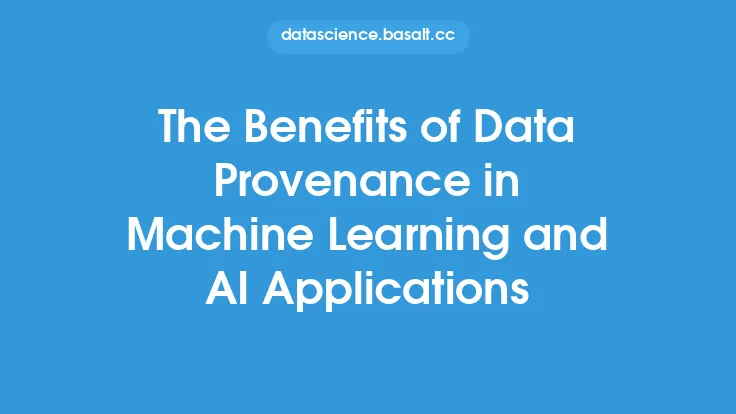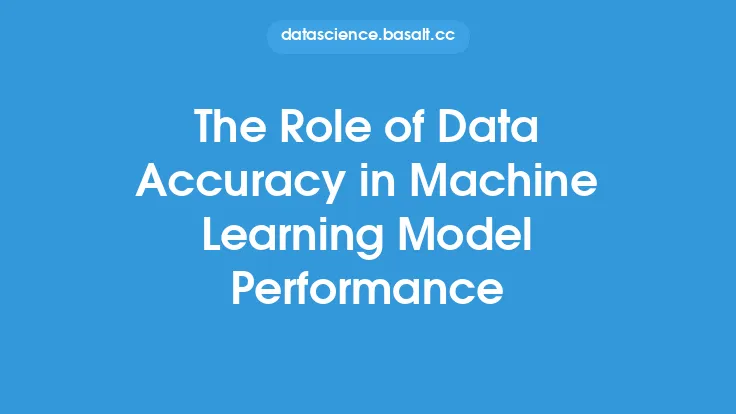Data transformation is a crucial step in the machine learning pipeline, and its importance cannot be overstated. It is the process of converting raw data into a format that is suitable for modeling, and it plays a critical role in determining the accuracy and reliability of machine learning models. In this article, we will delve into the world of data transformation, exploring its significance, techniques, and best practices.
Introduction to Data Transformation
Data transformation is a broad term that encompasses a range of techniques used to manipulate and prepare data for analysis. It involves taking raw data, which may be noisy, inconsistent, or incomplete, and transforming it into a clean, consistent, and meaningful format. This process is essential because machine learning algorithms are sensitive to the quality and format of the data they are trained on. By transforming the data, we can improve the performance of machine learning models, reduce the risk of overfitting, and increase the accuracy of predictions.
Types of Data Transformation
There are several types of data transformation, each with its own strengths and weaknesses. Some common types of data transformation include:
- Scaling: This involves transforming the data to have a consistent scale, usually between 0 and 1. Scaling is important because many machine learning algorithms are sensitive to the scale of the data.
- Encoding: This involves transforming categorical data into a numerical format that can be processed by machine learning algorithms. Common encoding techniques include one-hot encoding and label encoding.
- Normalization: This involves transforming the data to have a consistent distribution, usually a normal distribution. Normalization is important because many machine learning algorithms assume that the data is normally distributed.
- Feature extraction: This involves transforming the data to extract relevant features that are useful for modeling. Feature extraction techniques include principal component analysis (PCA) and singular value decomposition (SVD).
Techniques for Data Transformation
There are many techniques used for data transformation, each with its own strengths and weaknesses. Some common techniques include:
- Log transformation: This involves transforming the data using the logarithmic function. Log transformation is useful for transforming skewed data into a more normal distribution.
- Square root transformation: This involves transforming the data using the square root function. Square root transformation is useful for transforming data that has a large range of values.
- Standardization: This involves transforming the data to have a mean of 0 and a standard deviation of 1. Standardization is useful for transforming data that has a large range of values.
- Min-max scaling: This involves transforming the data to have a consistent scale, usually between 0 and 1. Min-max scaling is useful for transforming data that has a large range of values.
Best Practices for Data Transformation
Data transformation is a critical step in the machine learning pipeline, and it requires careful consideration and planning. Here are some best practices for data transformation:
- Understand the data: Before transforming the data, it is essential to understand the distribution, scale, and quality of the data.
- Choose the right technique: The choice of data transformation technique depends on the type of data, the machine learning algorithm, and the problem being solved.
- Evaluate the results: After transforming the data, it is essential to evaluate the results to ensure that the transformation has improved the quality and accuracy of the data.
- Document the process: Data transformation is a critical step in the machine learning pipeline, and it is essential to document the process to ensure reproducibility and transparency.
Common Challenges in Data Transformation
Data transformation is a complex and challenging process, and it requires careful consideration and planning. Here are some common challenges in data transformation:
- Handling missing values: Missing values are a common problem in data transformation, and they can have a significant impact on the accuracy and reliability of machine learning models.
- Handling outliers: Outliers are a common problem in data transformation, and they can have a significant impact on the accuracy and reliability of machine learning models.
- Choosing the right technique: The choice of data transformation technique depends on the type of data, the machine learning algorithm, and the problem being solved.
- Evaluating the results: After transforming the data, it is essential to evaluate the results to ensure that the transformation has improved the quality and accuracy of the data.
Conclusion
Data transformation is a critical step in the machine learning pipeline, and its importance cannot be overstated. By transforming the data, we can improve the performance of machine learning models, reduce the risk of overfitting, and increase the accuracy of predictions. In this article, we have explored the world of data transformation, including its significance, techniques, and best practices. We have also discussed common challenges in data transformation and provided guidance on how to overcome them. By following best practices and choosing the right technique, we can ensure that our data is transformed correctly and that our machine learning models are accurate and reliable.





